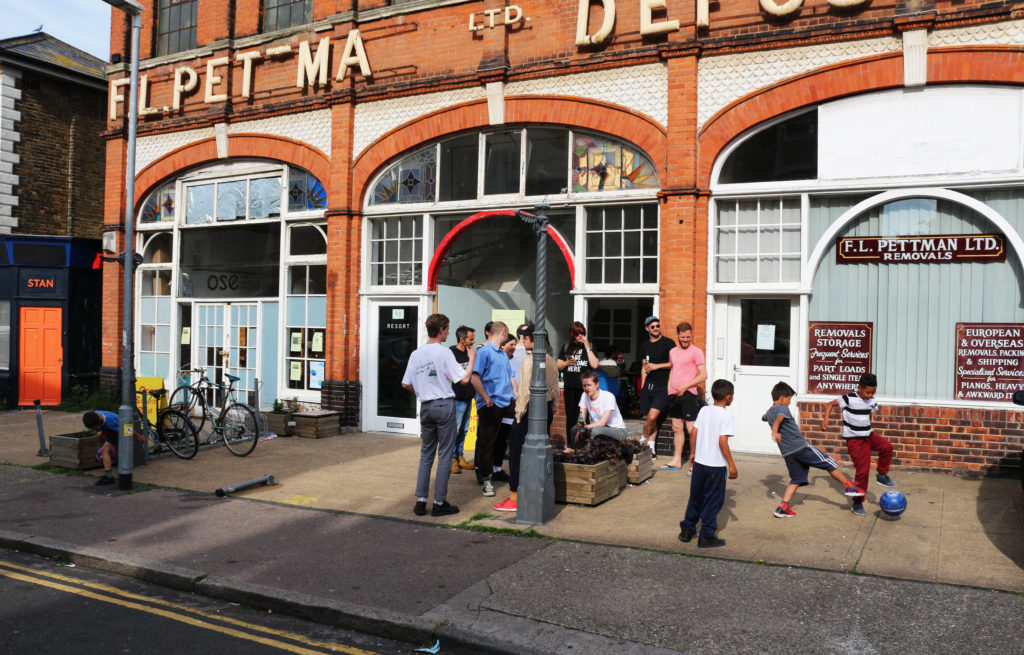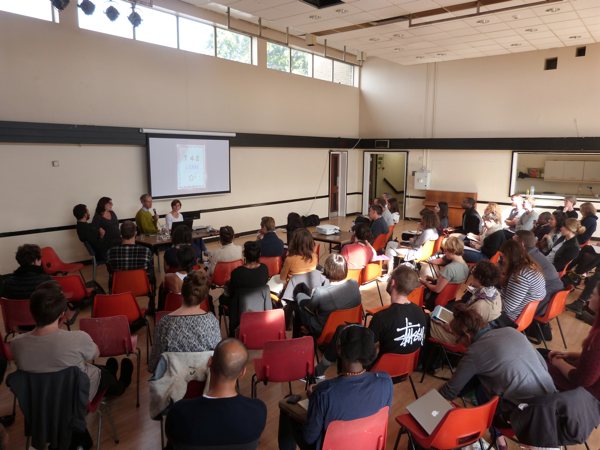Art World
What Future for London’s Open School East?
It's a difficult road from experimental project to sustainable organization.

It's a difficult road from experimental project to sustainable organization.

Coline Milliard

Open School East, an independent art school in Hackney, East London, has become in less than a year something of a flagship for self-organized educational initiatives. But like with all experiments, the real challenge isn’t starting out but staying open. As the first year draws to a close, a new fundraising campaign has started—the very existence of OSE is at stake.
With university fees tripling, and art progressively pushed out of the core school curriculum, art education in Britain has turned into a contested territory, fought for by leading figures such as artist Bob and Roberta Smith and Tate director Nicholas Serota.
Co-founders Anna Colin, Sarah McCrory, Sam Thorne and Laurence Taylor have taken a hands-on approach, and transformed the old Rose Lipman Library in De Beauvoir Town into a creative hub, providing studio space and teaching sessions for twelve artist-associates, all of which free of charge.
Reflecting on the origin of the project, Colin told artnet News: “it was about providing something that was different, more experimental, more versatile, more collaborative, listening to the needs of emerging artists.”
Self-organization is key at OSE. While the team scheduled some of the initial sessions and tutorials, associates were given free reign to set up their own programming from the second term.

Art, School, Society roundtable with Elena Crippa, Jannah Graham, Alistair Hudson, Ahmet Ögüt-September 2013
Photo: Eva Rowson
Peter Heslip, the director of Visual Arts at the Arts Council England, called the school a “promising model.” But as associate Ross Jardine pointed out in a conversation with artnet News, OSE isn’t meant as an alternative to traditional system, more of a complementary solution.
Colin confirmed: “It’s for people who already see themselves as artists and want to continue exploring their practice in an environment that’s more critical, theoretical, where they have time to think and reflect on their work.”
Crucially, OSE has defined its core identity as embedded within its location. The beneficiaries here are not only the 12 associates, but the community at large. The numbers speak for themselves. Between September 2013 and July 2014, 489 local residents took part in radio-making and ceramics workshops, and over 2,000 attended some of the events scheduled by the school, ranging from panel discussions to lectures and screenings.
OSE has already received a vote a confidence in the shape of a grant from Arts Council England for the coming year, other organizations have also committed to the project, and more money is currently being raised. “If we don’t get the right support in place, its future as a site for experimental pedagogy is at threat,” said Colin.